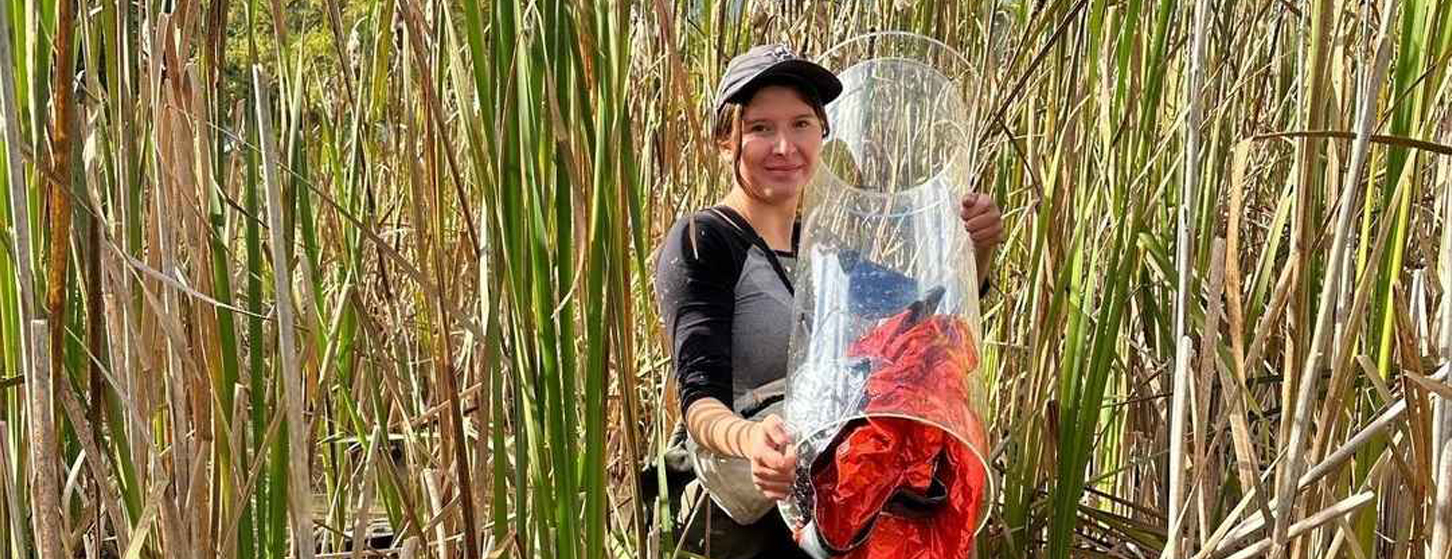Growing up in Washago, Ontario, Lily Edmunds loved camping, the outdoors, animals, and plants. As she got older and started learning about the impact of climate change on the environment, Lily started thinking about how she could make a difference.
After high school, she chose to study at Lakehead University Orillia because it was close to home and it allowed her to concurrently pursue an Environmental Technician Diploma from Georgian College and an Honour Bachelor of Arts and Science in Environmental Sustainability (specializing in ecosystem management) at Lakehead.
“The program covered so much about environmental sustainability. All my hopes came true,” Lily says.
Attending a smaller university also meant that she would have more one-on-one time with professors.
“When I started my degree, I met professors like Dr. Florin Pendea. After he gave a lecture about climate change on my first day, I went to his office to see how I could work with him.”
Dr. Pendea teaches in both the sustainability sciences department and the geography and the environment department at Lakehead University.
During her undergraduate research with Dr. Pendea, Lily and her fellow researchers collected and studied soil cores from the Lake Simcoe watershed—some were found to be over 11,500 years old.
“Over the first period we investigated, it looked like there hadn’t been much change,” Lily says. “The biggest shock was when we noticed a mountain peak of impact with lots of fungal spores likely resulting from charcoal and fire, meaning it was caused by humans.”
When the Europeans arrived in the area, the spike was even bigger. “That peak made it clear that humans have an impact on the soil, and it made me realize that I wanted to continue in my research.”
In April 2024, Lily successfully presented her fourth-year thesis, “Land Use Change and Human Influence on the Environment during the Late Holocene in the Orillia Area,” supervised by Dr. Pendea.
Lily’s passion for making a difference is not limited to research. She also gives back by volunteering with the Alzheimer Society and a cat shelter as well as by assisting with grant writing for environmental and Indigenous initiatives.
In addition, she directs her own non-profit, Fur-Ever Friendz, a charity she started when she was eight. Inspired by her great-grandmother, the charity offers stuffed animals as therapy companions for people with dementia.
Now a Master of Science in Forestry student, Lily is planning to continue classifying the Lake Simcoe watershed.
And she is excited about the potential translations for this research. “Lots of the proxies we’re collecting are new,” she says, referring to how scientists can use samples of biological materials, such as pollen, to help reconstruct the Earth’s climactic and weather conditions in the period before official records were kept. “Fungal, animal, plant, and fire proxies show us the impacts of thousands of years of climate change—it’s like a history book.”
“The soil cores preserve so well,” she adds.
“They tell you so much about the effect of humans on the soil and how the arrival of Europeans had an impact on the land, as well as the probable impact of humans in the future. It’s the Earth’s way of giving back."

Lily, who received her HBASc in Environmental Sustainability in 2024, gets ready to do fieldwork in the George Langman Sanctuary wetland.


